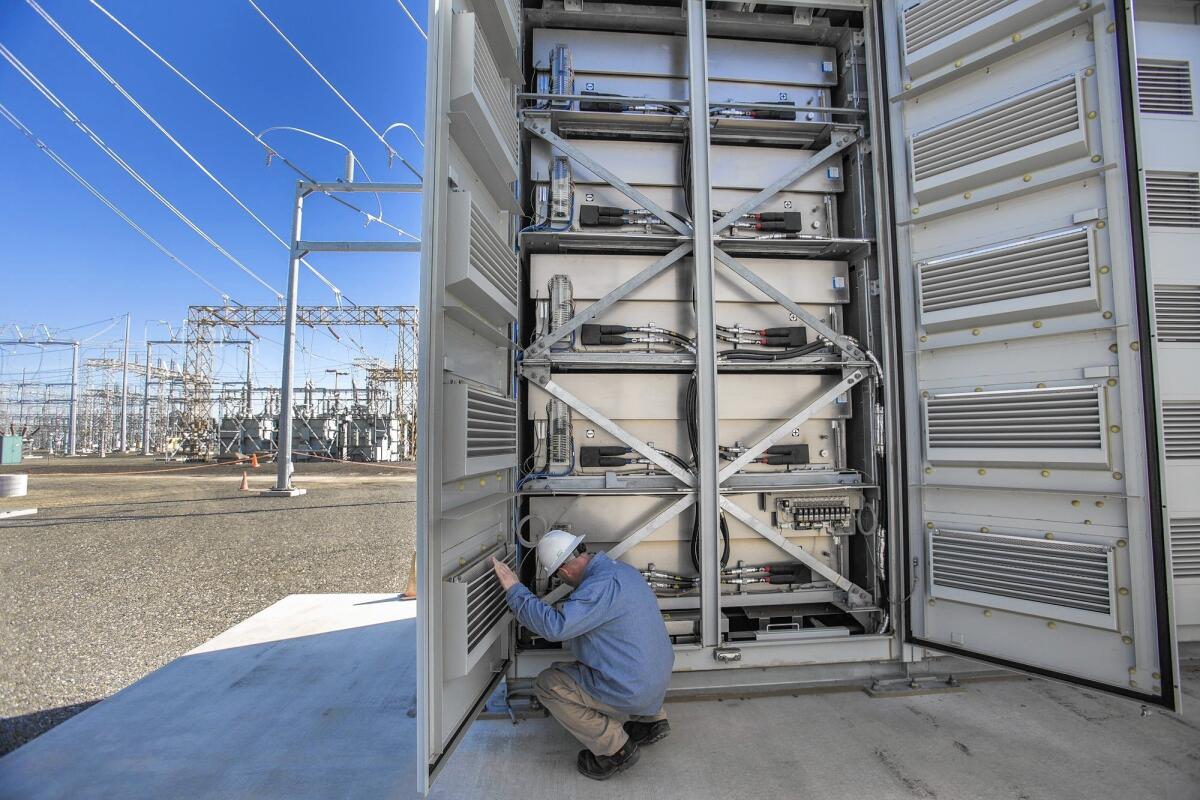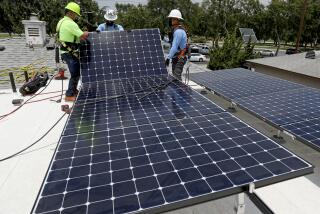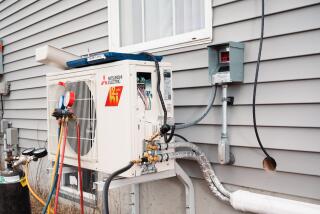Readers React: Battle against climate change is this generation’s WWII

To the editor: When the U.S. entered World War II, the nation united. From industries manufacturing war materiel, to families rationing their provisions, to the media whipping up the fervor necessary to achieve a total economic transformation, every effort went into enlisting the whole country in the endeavor. (“California’s push for clean energy has a problem: no place to store it,” March 23)
Today we face another enormous challenge: We must wean our energy system from the fossil fuels that are bringing on climate havoc and develop clean, sustainable energy as quickly as possible. News organizations like The Times have a vital role to play in educating the public, so a front-page story on California’s efforts is very welcome.
But why does this article emphasize the difficulties with storage of clean electricity instead of the substantial progress actually described in the piece? Clean energy is the overriding issue of our day.
Imagine that, just as in all-out war, lives are at stake — because they are.
Grace Bertalot, Anaheim
..
To the editor: By proposing to mandate that 50% of California’s electrical energy be from renewable resources by 2030, the politicians and environmentalists seem to ignore the fact that wind and solar sources are unreliable, a characteristic undesirable to the consumer who relies on continuously available power.
Wind and solar energy are not “dispatchable,” a power company term that defines the ability of the grid controller to selectively increase or decrease the power generation of specific facilities to meet demand. Fossil and nuclear sources provide this capability and in fact must be retained as “hot backup” to wind and solar when the wind fails to blow and inconvenient night occurs.
Gordon Osborne, Woodland Hills
The writer is a former DWP power engineer.
..
To the editor: This excellent article on the need to store green power makes a number of good points and illuminates a seldom discussed shortcoming of wind and solar power. However, the problem is not quite as extreme as is depicted by the graph showing a seven-hour lag between peak solar production and peak demand.
That graph accurately shows solar production and peak energy consumption, the latter occurring at 8 p.m. on April 27, 2014. But April 27 was a Sunday, not a weekday. Furthermore, April 27 was the beginning of a heat wave. Anyone who has reviewed data from the state knows that during weekdays, which is 70% of the time, peak daily consumption occurs between 3 and 4 p.m.
The April 27 graph, although supportive of the article’s theme, shows more of an anomaly than an example of typical daily electricity demand in California. Indeed, it is simply false to suggest that daily average peak consumption occurs at 8 p.m.
Stan Zubel, San Diego
Follow the Opinion section on Twitter @latimesopinion and Facebook
More to Read
A cure for the common opinion
Get thought-provoking perspectives with our weekly newsletter.
You may occasionally receive promotional content from the Los Angeles Times.










